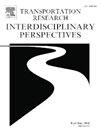Optimizing location of solid waste transshipment station in Rayong, Thailand
IF 3.9
Q2 TRANSPORTATION
Transportation Research Interdisciplinary Perspectives
Pub Date : 2024-09-01
DOI:10.1016/j.trip.2024.101226
引用次数: 0
Abstract
Rayong is a model province for solid waste management in Thailand, with the Center of Integrated Solid Waste Management (CISWM) situated in Muang district handling around 1,000 t per day. The large amount of solid waste comes from the 62 local government organizations (LGOs) in Rayong, with 36 of these directly dispatching their solid waste to CISWM, while for the remaining 26 LGOs, the solid waste is first transshipped via a solid waste transshipment station in Klang district before being dispatched to CISWM, due to the long distance otherwise involved. The amount of solid waste is expected to increase in the future and the Rayong Provincial Administrative Organization (RPAO) wishes to decrease the associated transport costs. Therefore, this paper optimized the location of a solid waste transshipment station for the RPAO by forecasting the number of loads of solid waste from the 62 LGOs for the next 30 years. An integer programming model was developed to minimize the total system costs, combined with comparative economic analysis. Based on the results, Pluak Daeng district was the optimal location to establish a new solid waste transshipment station. Furthermore, it was worthwhile for the RPAO to invest in this additional solid waste transshipment station.
泰国罗勇府固体废物转运站的优化选址
罗勇府是泰国固体废物管理的典范,位于 Muang 县的固体废物综合管理中心 (CISWM) 每天处理约 1000 吨固体废物。大量的固体废物来自罗勇府的 62 个地方政府组织 (LGO),其中 36 个直接将固体废物运往 CISWM,而其余 26 个地方政府组织的固体废物则首先通过巴生县的固体废物转运站转运,然后再运往 CISWM,否则路途遥远。预计未来固体废物的数量将会增加,罗勇府行政组织(RPAO)希望降低相关的运输成本。因此,本文通过预测未来 30 年 62 个地方政府组织的固体废物装载量,为罗勇省行政组织优化了固体废物转运站的选址。结合比较经济分析,建立了一个整数编程模型,以最小化系统总成本。根据分析结果,Pluak Daeng 区是建立新固体废物转运站的最佳地点。此外,对 RPAO 而言,投资新建固体废物转运站是值得的。
本文章由计算机程序翻译,如有差异,请以英文原文为准。
求助全文
约1分钟内获得全文
求助全文
来源期刊

Transportation Research Interdisciplinary Perspectives
Engineering-Automotive Engineering
CiteScore
12.90
自引率
0.00%
发文量
185
审稿时长
22 weeks
 求助内容:
求助内容: 应助结果提醒方式:
应助结果提醒方式:


